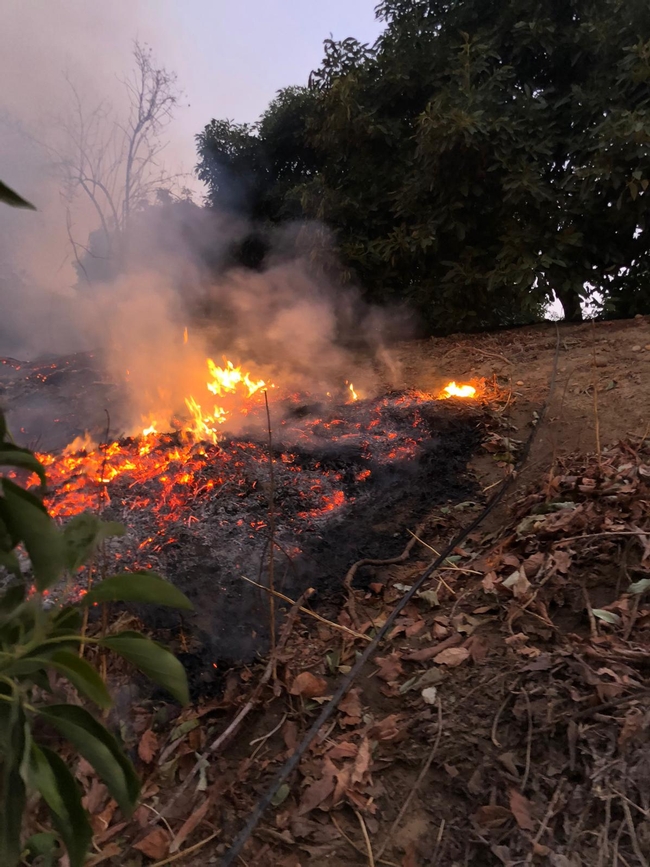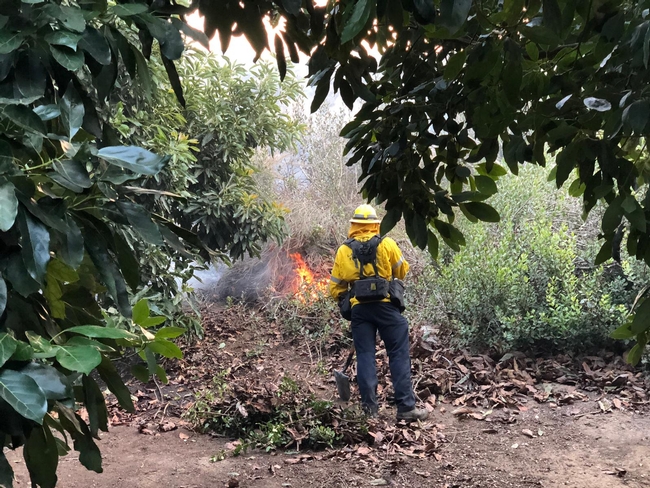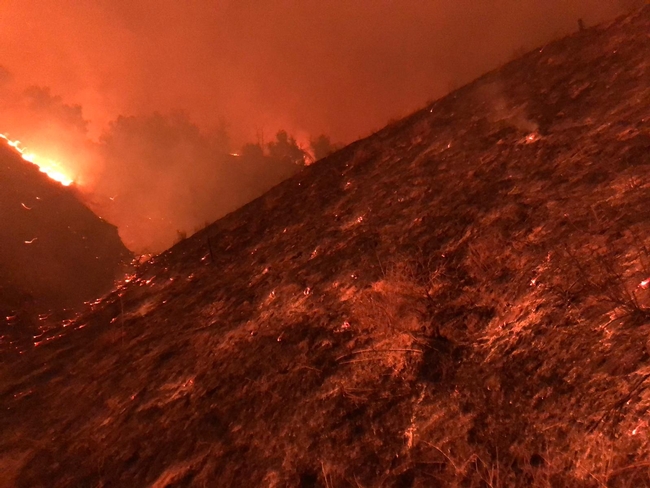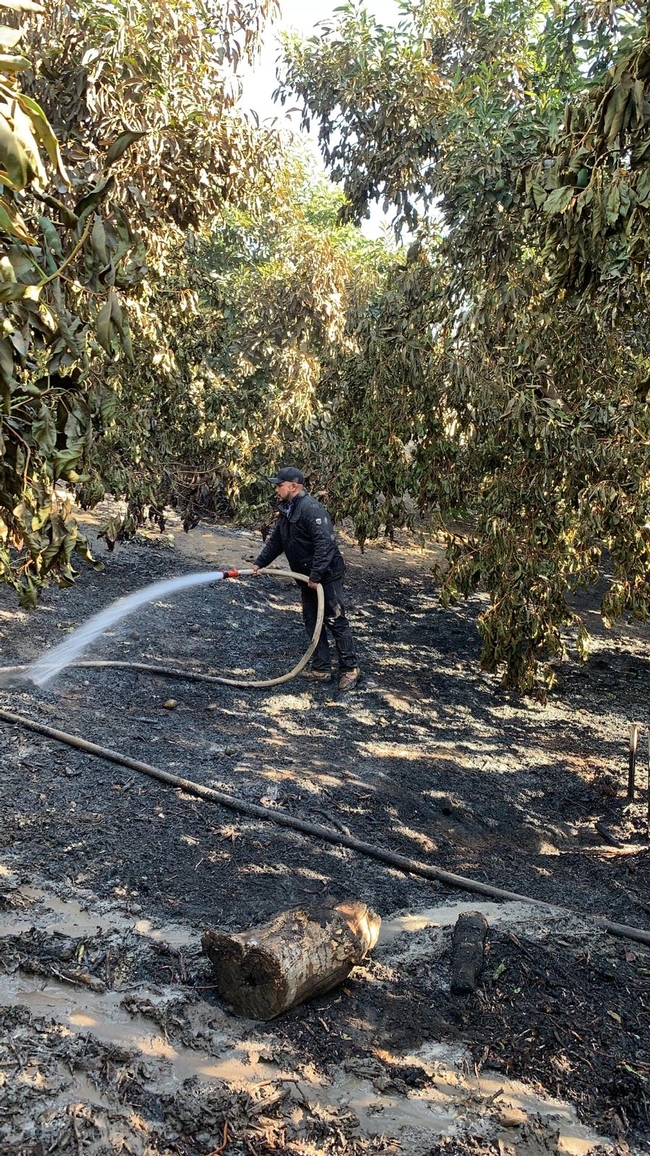The very fact that avocados can be grown in hard to get to places means that the trees are also in areas that are subject to wildfire damage. Recently several hundred acres of avocado burned in the foothills. The fire was fanned by high winds and low humidity.
Every year there are avocado trees that burn, either through careless attention to early morning fires that pickers build, wildfires or car accidents. A grower needs to be patient and observant to bring the trees back into production.
Although injury to foliage and young growth is visible within a few days of the fire, the full extent of the damage may not be known for several months or possibly the next growing season. In the case of severe injury, die-back may continue to occur for several months after the fire. New growth that occurs after the fire may suddenly collapse the following year when the growth is tested by Santa Ana conditions.
The important rule to follow after a fire is to do nothing - don't prune, don't fertilize and maybe don't water. Or rather, water very carefully. Dry winds may have sucked the water out of the ground and may need to be replenished. The fire may have burned the irrigation lines and need to be replaced.
The need to immediately replace irrigation systems will depend on the time of year, the extent of damage, the soil moisture after the fire, the weather forecast, labor availability and many other considerations. It is not terribly expensive to replace hoses, but if PVC sub mains have burned, it will be a big job and it may not be necessary to jump on their replacement. Check the soil and the tree status before rushing to replace an irrigation system. It is on the list of things to do, but maybe not tomorrow.
In the meantime, if the tree has been defoliated by the fire, it has lost its ability to transpire water. Watering a tree with no leaves will set up those conditions that are conducive to root rot. Until the tree begins to leaf out, watch soil moisture to decide how much water the trees are pulling out of the soil. The emitters should be capped or plugged on some leafless trees. Then as the tree puts on new growth, shallow, infrequent irrigations should start. This may mean replacing the 10 gph microsprinkler with a 1 gph dripper if only a portion of the orchard has been burned and the rest of the trees need their usual amounts and frequency of water.
The avocado has a tremendous ability to come back from fire and frost damage. However, the tree will tell you where it is coming back. It will start pushing growth where the tree is still healthy. It may take 3 to 6 months for this growth to occur.
Delay pruning until the tree clearly shows where it is going to regrow. By waiting, you save the expense of having to return sometime later to remove more wood and also will be able to save the maximum about of tree.
An activity the grower can perform is whitewashing. The defoliated tree can be further damaged by sunburn after it has lost its protective cover of leaves. The upper surface of horizontal limbs and the south sides of exposed trunks are the most affected. The whitewash can delay the appearance of new growth, but it does not affect total growth. There is usually no value in applying the whitewash to small limbs.
There are various commercial whitewashes on the market. The easiest to prepare is the cheapest white latex paint on the market mixed with water to the extent that it will go through a sprayer.
Avocado trees have a great ability to recover after fire damage. Even trees killed below the bud union will frequently develop into good trees if they are rebudded and given good care. Trees which do not put out vigorous sprouts should be removed. Interplanting avocados would rarely be advisable because of their rapid recovery.
Fire Information:
http://ceventura.ucanr.edu/Agricultural_Threats/Fire_Information/
For another version of fire recovery, go to: https://www.californiaavocadogrowers.com/cultural-management-library/post-fire-grove-recovery
Photos from Kevin Ball, firefighter/farmer



